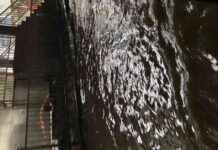Adhesion, the invisible force that allows dissimilar materials to cling to each other, plays a crucial role in the natural world. From spiders spinning intricate webs to geckos defying gravity on vertical surfaces, adhesion is a phenomenon that has fascinated scientists for centuries. Understanding the principles of adhesion not only unlocks the secrets of nature’s wonders but also offers a pathway to a more sustainable future.
The Science of Adhesion
Adhesion is governed by the interplay of intermolecular forces, which are the attractive forces between individual molecules. These forces can be categorized into several types, including Van der Waals forces, electrostatic forces, and chemical bonding. Van der Waals forces, for example, are responsible for the gecko’s ability to climb effortlessly on various surfaces. By studying these forces at the molecular level, scientists can gain insights into how adhesion works and how it can be harnessed for sustainable applications.
One of the key factors in adhesion is surface energy, which determines how well two materials will adhere to each other. Materials with similar surface energies tend to adhere better than those with disparate surface energies. This understanding has led to the development of techniques such as surface modification, where the surface of a material is altered to enhance adhesion properties. By manipulating surface energies, researchers can create stronger and more durable bonds between materials, paving the way for innovative adhesive solutions.
Nature’s Adhesive Innovations
Nature has long served as a source of inspiration for sustainable adhesion solutions. Animals and plants have evolved unique mechanisms to adhere to surfaces, providing valuable insights for scientists and engineers. Geckos, for example, use microscopic hairs on their feet to create a strong Van der Waals force with surfaces, allowing them to climb vertical walls with ease. By studying the structure and composition of gecko feet, researchers have developed bio-inspired adhesives that mimic this natural adhesion mechanism.
Mussels are another example of nature’s adhesive prowess. These marine creatures produce a powerful adhesive protein that allows them to cling to rocks in turbulent waters. By studying the properties of this protein, scientists have developed eco-friendly adhesives that can be used in various applications, from construction to medical devices. The resilience and strength of mussel adhesive proteins have inspired a new generation of sustainable adhesives that minimize environmental impact.
Spider silk is yet another natural wonder that showcases the remarkable adhesive properties found in nature. Spiderwebs are made from proteins that exhibit exceptional adhesion and tensile strength, allowing spiders to catch prey and build intricate structures. By understanding the molecular structure of spider silk, researchers are exploring ways to harness its adhesive potential for medical applications. Biocompatible adhesives derived from spider silk could revolutionize wound healing and tissue engineering, offering sustainable alternatives to traditional adhesives.
Sustainable Adhesion Solutions
Beyond simply mimicking nature’s wonders, understanding the principles of adhesion can lead to the development of new sustainable solutions. Bio-based adhesives, for example, utilize renewable resources like plant starches and natural resins to replace traditional, often solvent-heavy adhesives. These eco-friendly alternatives reduce environmental impact and promote a circular economy by utilizing biodegradable materials.
Pressure-sensitive adhesives (PSAs) are another innovative solution that minimizes the use of harsh chemicals and simplifies recycling processes. These adhesives require minimal pressure to form a bond, making them ideal for applications where gentle adhesion is needed. By reducing the reliance on toxic substances, PSAs offer a greener alternative to traditional adhesives that can be harmful to both human health and the environment.
Self-healing adhesives represent a cutting-edge technology inspired by the regenerative capabilities of some organisms. These adhesives are designed to repair themselves when damaged, extending their lifespan and reducing waste. By incorporating self-healing mechanisms into adhesives, researchers are developing materials that are more durable, long-lasting, and sustainable. This innovation has the potential to revolutionize industries ranging from automotive to aerospace, where strong and reliable adhesion is essential.
The Future of Sustainable Adhesion
The world of adhesion holds immense potential for a more sustainable future. By learning from nature and embracing innovative materials and techniques, we can create stronger, more durable, and eco-friendly adhesives that minimize environmental impact. From gecko-inspired climbing robots to biocompatible medical solutions, the possibilities are endless in the realm of sustainable adhesion.
As we continue to unlock the secrets of adhesion and develop new technologies, we can pave the way for a greener future where materials are used more efficiently, waste is minimized, and environmental impact is reduced. By harnessing the power of adhesion, we can create a world where sustainability and innovation go hand in hand, leading to a brighter and more adhesive future for generations to come.




















